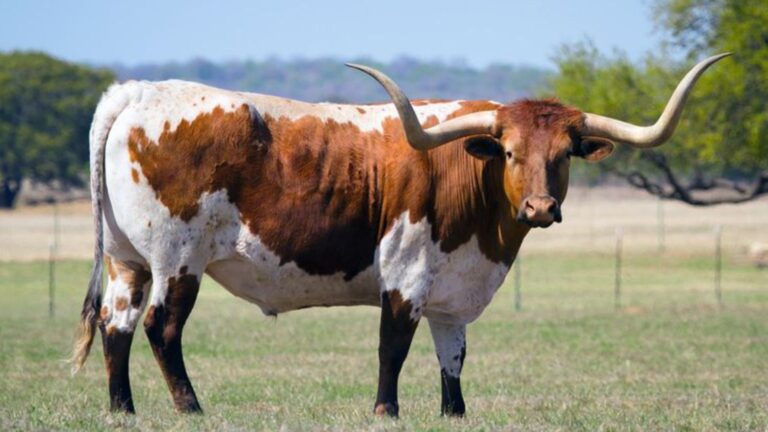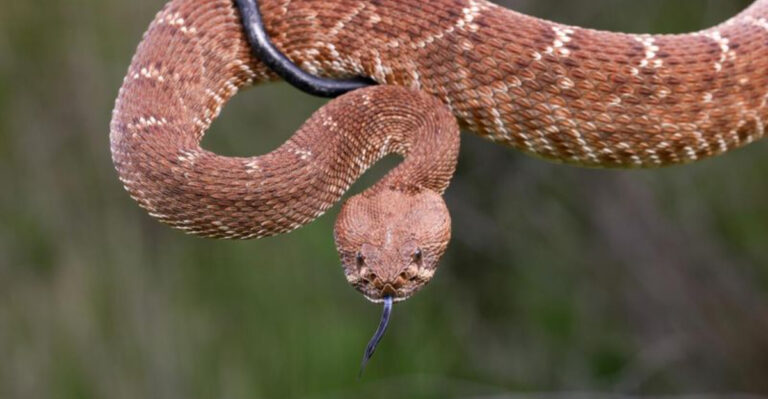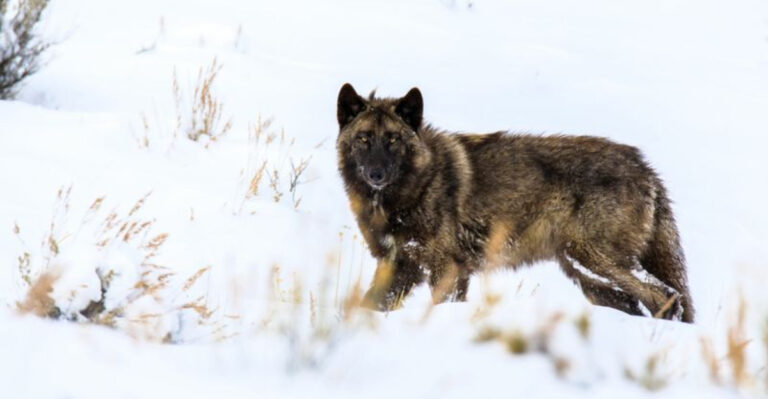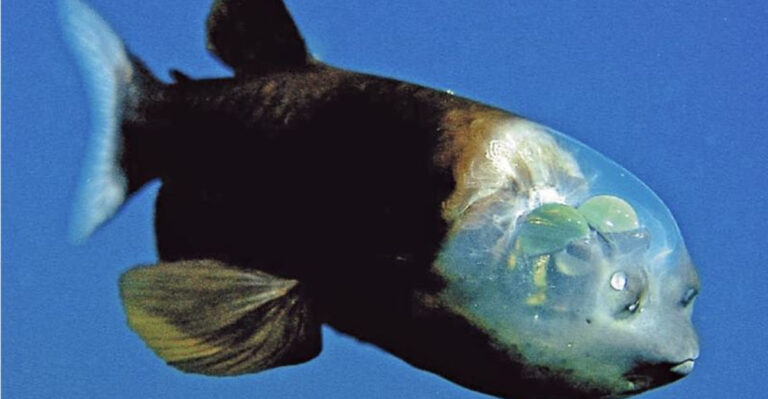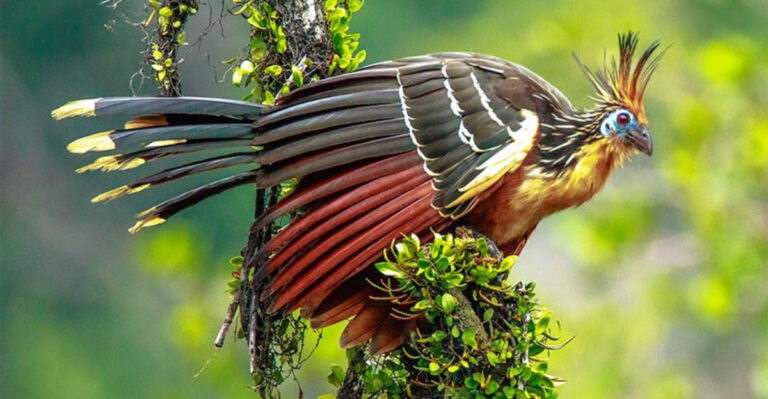15 Surprising Facts About The Creepy Aye-Aye
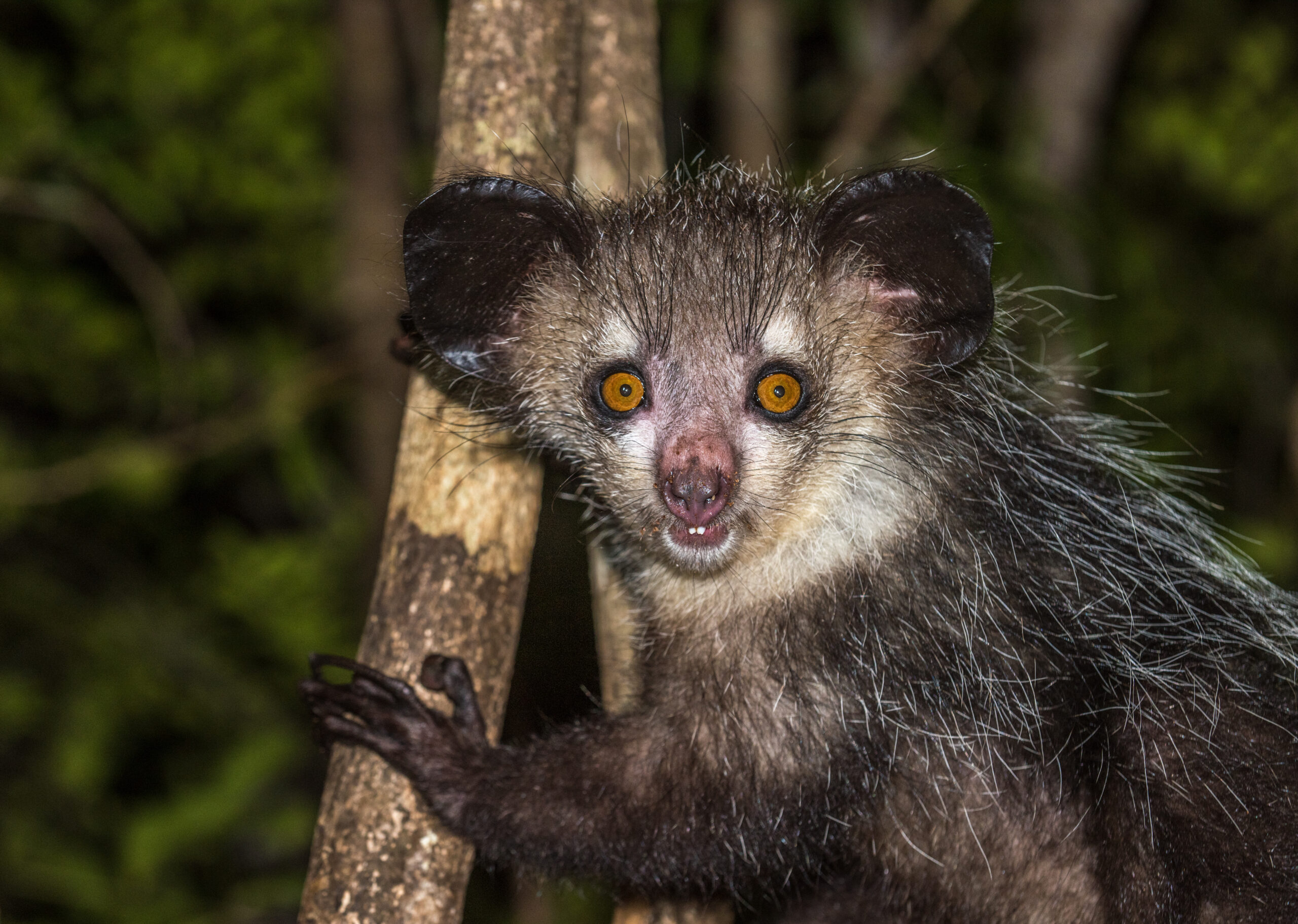
In the realm of the animal kingdom, the aye-aye stands out as one of the most bizarre and intriguing creatures. Native to Madagascar, this nocturnal primate is shrouded in mystery and often misunderstood.
Despite its peculiar appearance and unusual behaviors, the aye-aye plays a crucial role in its ecosystem. Join us on a fascinating journey as we uncover surprising facts about this creepy, yet captivating creature.
1. Unique Finger Anatomy
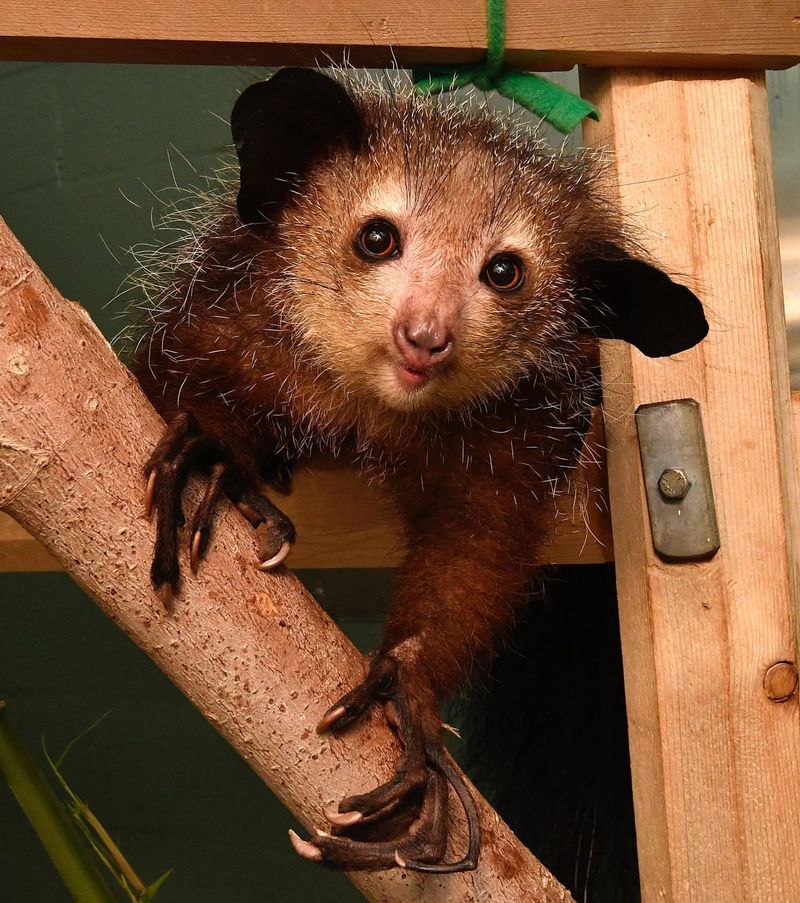
Unlike any other primate, the aye-aye sports a remarkably elongated middle finger, which it uses as a tool to extract insects from tree trunks. This peculiar adaptation allows it to tap on wood to locate hollow spots where grubs reside.
Once a hollow is found, the aye-aye gnaws a hole with its rodent-like teeth and inserts its spindly finger to fish out its prey. This unique feeding method is akin to using a natural stethoscope and chopstick, showcasing the aye-aye’s evolutionary ingenuity.
It’s a quirky yet effective way to dine in the wild, making this primate a true natural innovator.
2. Echo-Location Abilities
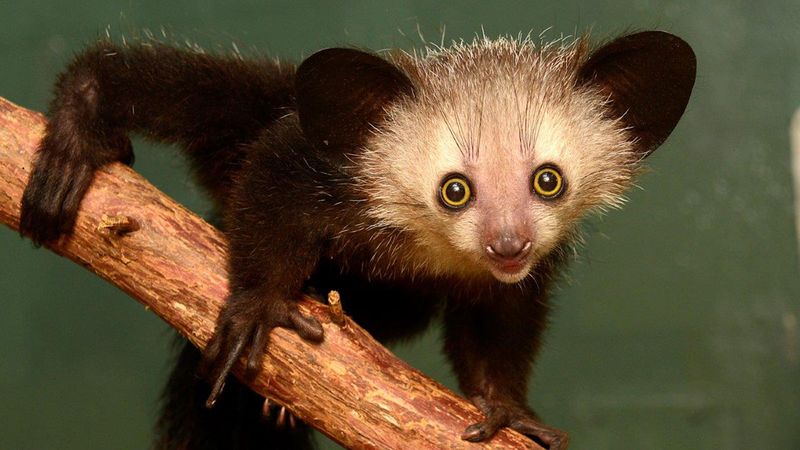
While bats and dolphins are famous for their echolocation, the aye-aye has its own version of this skill. By tapping on wood, it listens to the returning sounds with acute hearing to find insect larvae. This ability to “hear” prey within wood sets the aye-aye apart from most primates.
The sophistication of this technique is akin to a natural sonar system, allowing the aye-aye to thrive in the dark underbrush of Madagascar. It’s a testament to nature’s inventiveness, equipping the aye-aye with a skill that ensures its survival in its unique habitat.
3. Nocturnal Lifestyle
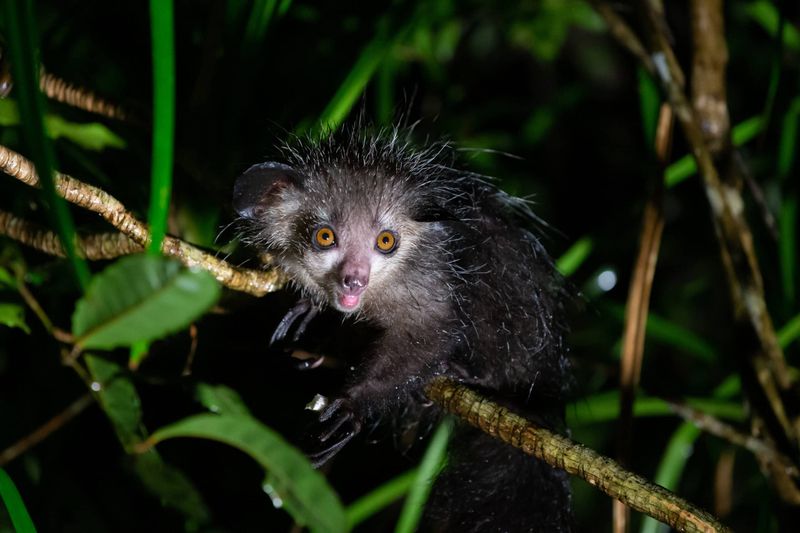
The aye-aye’s nocturnal habits mean it spends its nights foraging and its days resting. This nighttime activity helps it avoid predators and human detection. With large, sensitive eyes, the aye-aye navigates the darkness with ease, making the most of its moonlit environment.
Its nocturnal lifestyle is a clever survival strategy, minimizing competition and maximizing its feeding opportunities. The aye-aye’s ability to thrive in darkness is both a marvel of adaptation and a spooky sight for those lucky enough to glimpse it in its natural habitat.
4. Superstitions And Myths
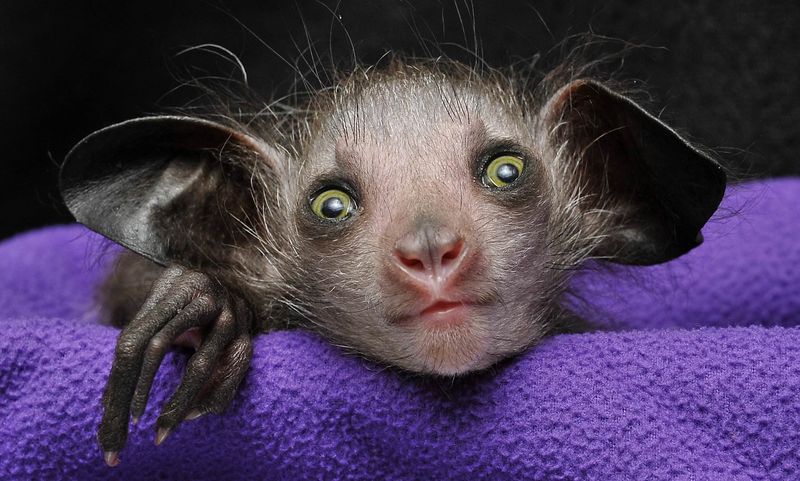
In Madagascar, the aye-aye is often viewed with superstition, believed by locals to be an omen of ill luck or death. This perception is fueled by its eerie appearance and nocturnal habits. Some myths even suggest that seeing an aye-aye predicts death unless the creature is killed first.
These superstitions have sadly led to the persecution of this unique primate. However, conservation efforts aim to shift these beliefs, highlighting the importance of the aye-aye in maintaining ecological balance.
The blend of myth and reality surrounding the aye-aye adds a mysterious allure to this already fascinating creature.
5. Unusual Feeding Habits
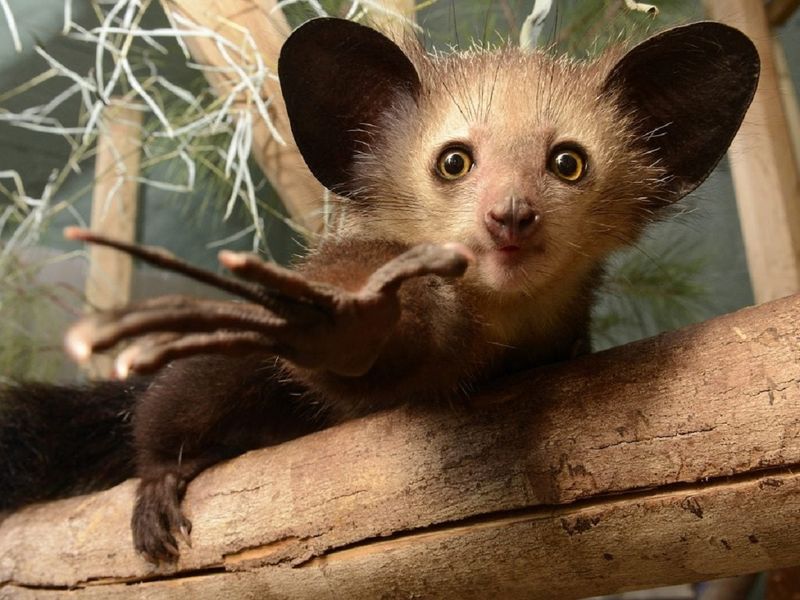
Feeding on a diet of insect larvae, fruit, and nectar, the aye-aye’s eating habits are as peculiar as its appearance. It uses its rodent-like teeth to gnaw through bark, and its elongated finger to extract insects. This method is similar to a woodpecker’s technique, yet uniquely adapted for a primate.
The aye-aye’s ability to exploit a niche food source demonstrates its adaptability and keystone role in its environment. Its feeding strategy is a perfect example of how evolution tailors creatures to fit their ecological niches, making the aye-aye both a peculiar eater and an important part of its ecosystem.
6. Solitary Nature
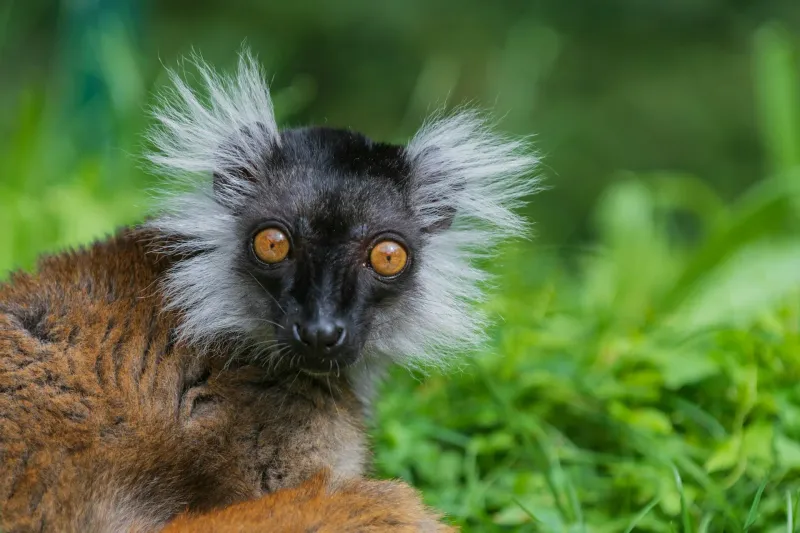
Typically a lone ranger, the aye-aye spends much of its life alone, coming together with others only to mate. This solitary lifestyle limits competition for food and territory. Each aye-aye establishes a home range in the dense forests of Madagascar, where it forages and rests.
This independent nature is a survival tactic, reducing the risk of disease and predation. Despite seeming antisocial, the aye-aye’s solitary existence allows it to thrive in a challenging environment, showcasing the diversity of primate social structures. It’s a lonely life, but one perfectly suited to this unique creature.
7. Specialized Teeth
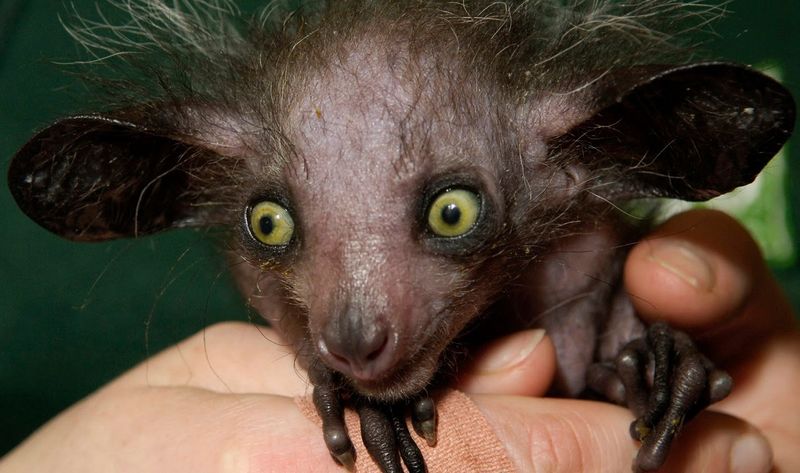
Aye-ayes possess continually growing incisors, much like rodents, which are rare among primates. These teeth are perfectly designed for gnawing through tough bark and accessing insect larvae hidden within.
Unlike other primates, the aye-aye’s teeth are not used for chewing foliage or fruit. Instead, they serve as precise tools for its specialized diet. This dental adaptation is a remarkable example of convergent evolution, where unrelated species develop similar traits.
The aye-aye’s sharp teeth are a testament to nature’s ability to equip animals with the necessary tools to exploit available resources.
8. Big Eyes And Ears
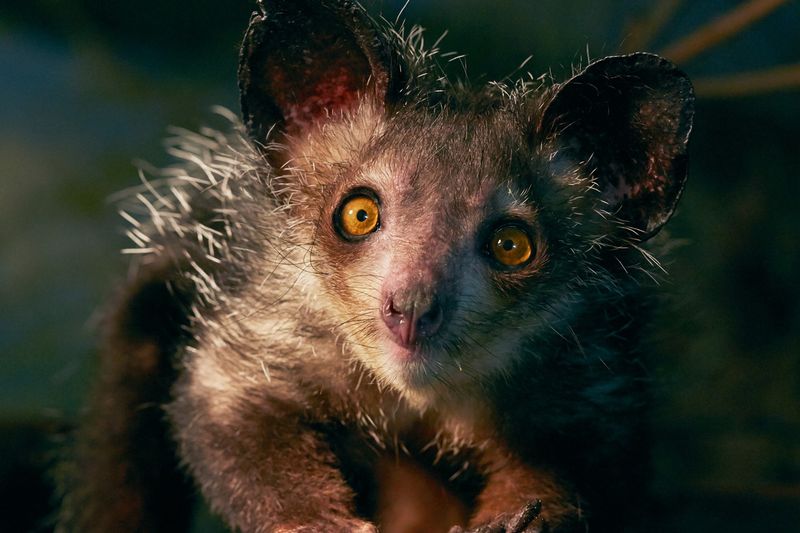
Sporting oversized eyes and large ears, the aye-aye is perfectly adapted to its nocturnal lifestyle. Its big eyes allow it to see in low light, while its large ears enhance its ability to hear the subtle sounds of insects beneath tree bark. This sensory adaptation is crucial for survival in the dark forest understory.
The aye-aye’s appearance might be startling, but these features serve a vital purpose. Its sensory equipment makes it a highly efficient nocturnal hunter, navigating the night with a blend of sight and sound that few other animals can match.
9. Unique Nesting Habits
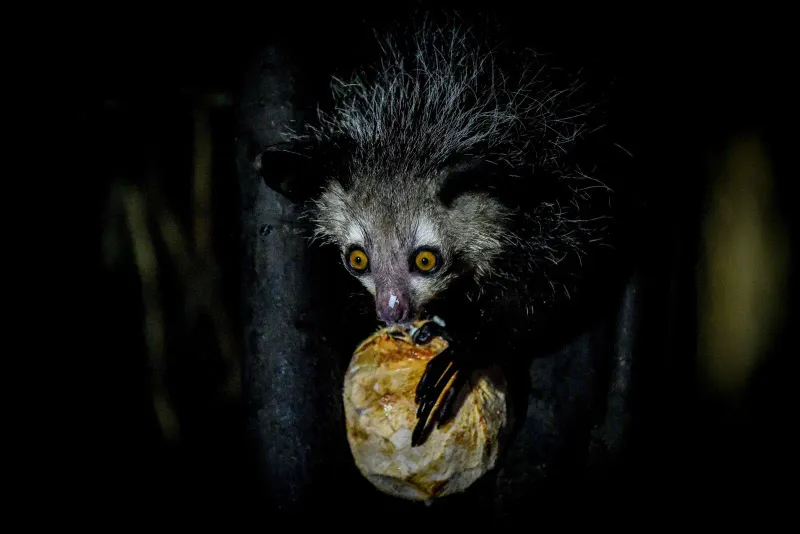
Unlike many primates, the aye-aye builds nests, which are spherical in shape and constructed from twigs and leaves. These nests offer shelter and protection, and are strategically placed high in the trees to avoid ground predators.
Each aye-aye maintains several nests within its home range, rotating use to avoid detection. These arboreal hideouts are both a home and a fortress, showcasing the aye-aye’s unique approach to survival.
Through its nesting habits, the aye-aye demonstrates an intriguing blend of instinct and ingenuity, creating a safe haven in the dense forests of Madagascar.
10. Conservation Status
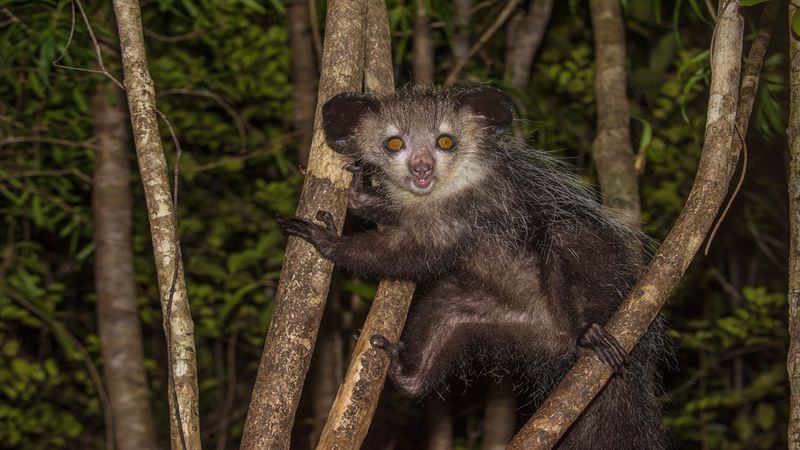
Listed as Near Threatened, the aye-aye faces threats from habitat destruction and human persecution. Its eerie appearance has long made it a target of fear and superstition. Conservation efforts focus on habitat preservation and education to change perceptions.
These initiatives aim to protect the aye-aye and its environment, ensuring the survival of this remarkable species.
The aye-aye’s plight highlights the broader challenges facing Madagascar’s wildlife. Through conservation work, there is hope for the aye-aye to continue its essential role in the ecosystem, reminding us of the importance of protecting our planet’s unique creatures.
11. Evolutionary Anomaly
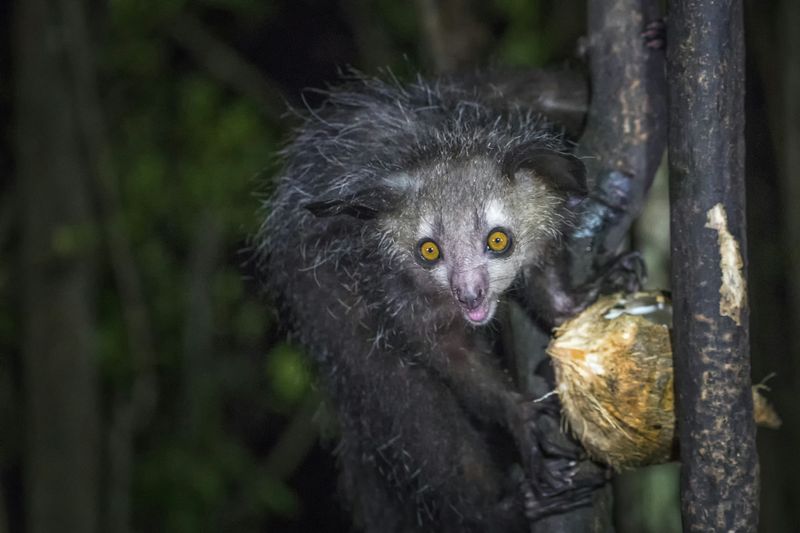
The aye-aye stands out as an evolutionary oddity among primates, with no close relatives. Its unique characteristics set it apart, making it a fascinating subject for evolutionary biologists. The combination of rodent-like teeth, elongated fingers, and nocturnal habits defy typical primate classifications.
This evolutionary path highlights nature’s ability to craft diverse life forms suited to specific ecological niches. The aye-aye’s existence challenges our understanding of primate evolution, offering insights into how adaptability shapes the animal kingdom.
Its uniqueness is a celebration of the diversity that evolution can produce in the natural world.
12. Role In Ecosystem
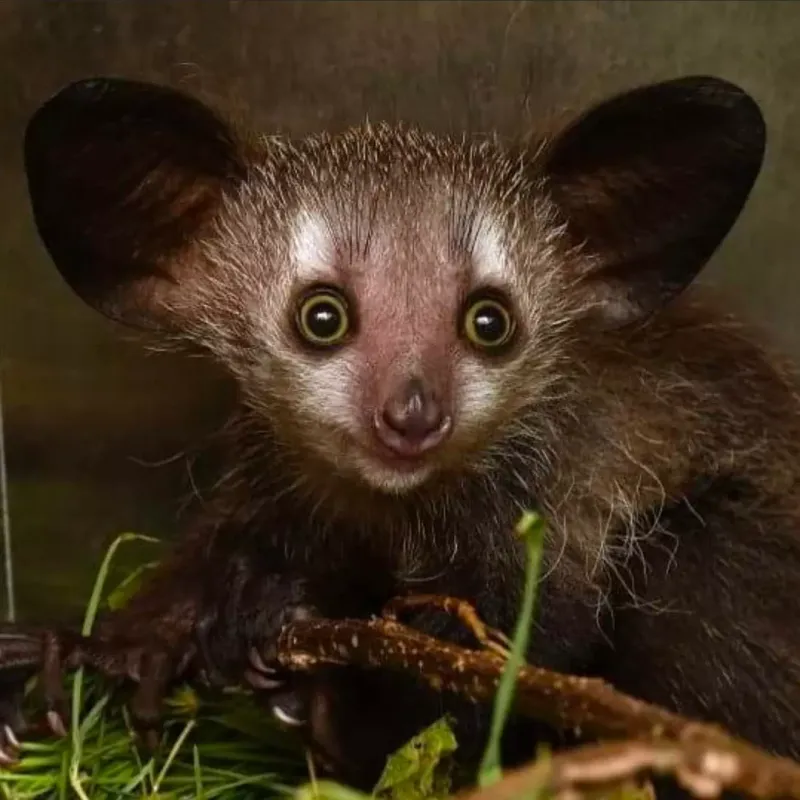
The aye-aye plays a pivotal role in its ecosystem by controlling insect populations, primarily through its specialized feeding habits. By preying on larvae within trees, it helps maintain the health of the forest.
This ecological role is vital, as unchecked insect populations can damage trees and disrupt the balance of the forest. The aye-aye’s presence is a natural form of pest control, underscoring its importance beyond its peculiar appearance.
Through its actions, the aye-aye supports the rich biodiversity of Madagascar’s forests, demonstrating the interconnectedness of all species within an ecosystem.
13. Symbol Of Madagascar
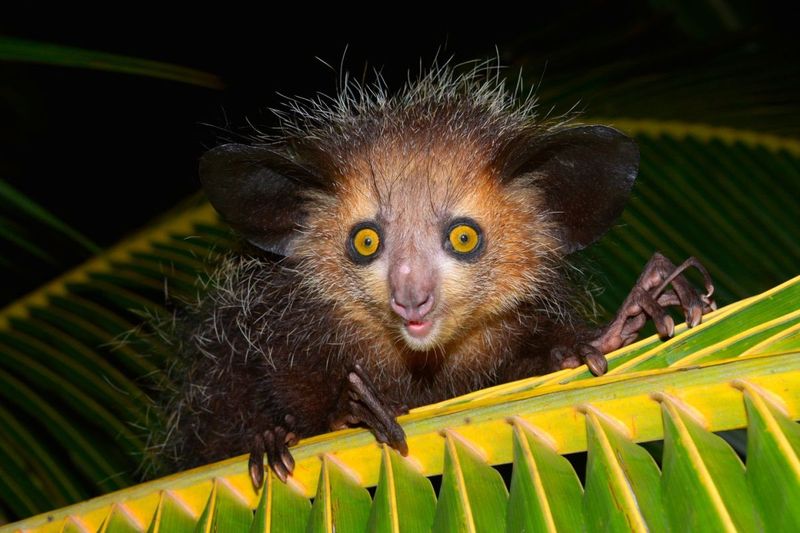
The aye-aye is not just a curious creature but a symbol of Madagascar’s unique biodiversity. Its presence highlights the island’s rich natural heritage and the need for conservation. As an ambassador for the island’s wildlife, the aye-aye draws attention to the ecological wonders found nowhere else on Earth.
Its peculiar traits and mysterious allure make it a powerful emblem for conservation efforts. By protecting the aye-aye, we also preserve the diverse habitats that support countless other species.
In this way, the aye-aye serves as a reminder of the importance of safeguarding our planet’s irreplaceable natural treasures.
14. Unique Grooming Behavior
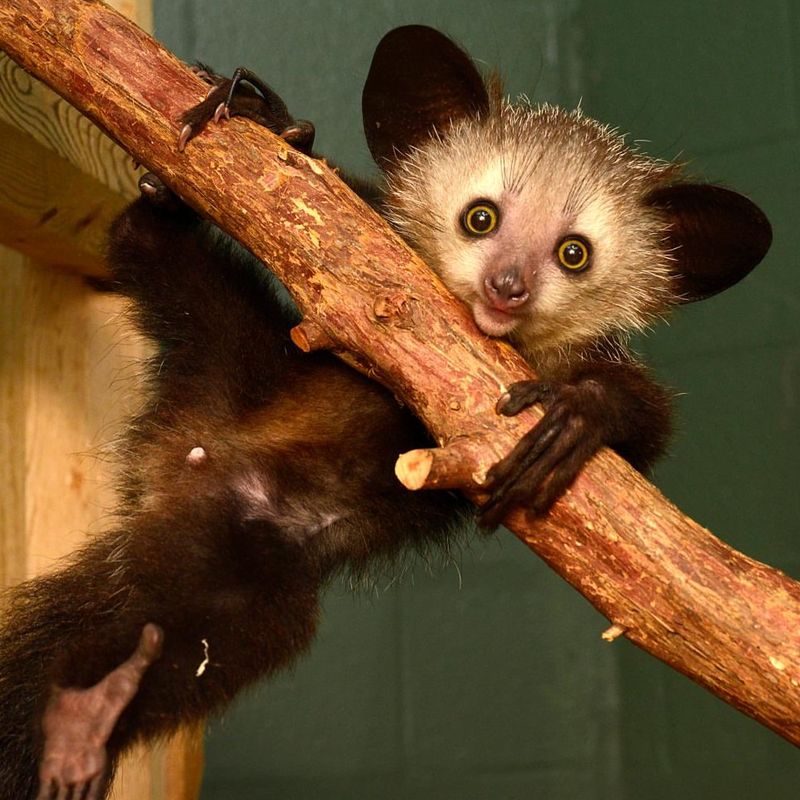
Beyond feeding, the aye-aye’s elongated finger serves another purpose—grooming. This versatile digit helps it reach places that other primates cannot, ensuring it maintains its fur in pristine condition. The aye-aye’s grooming rituals are both functional and fascinating, showcasing its adaptability.
This behavior highlights the dual utility of its unique anatomy, turning a feeding tool into a personal grooming assistant. In the wild, cleanliness is next to survival, and the aye-aye’s inventive grooming habits are just another way it navigates the challenges of its environment.
It’s a testament to how evolution tailors creatures to their needs.
15. Mysterious Communication
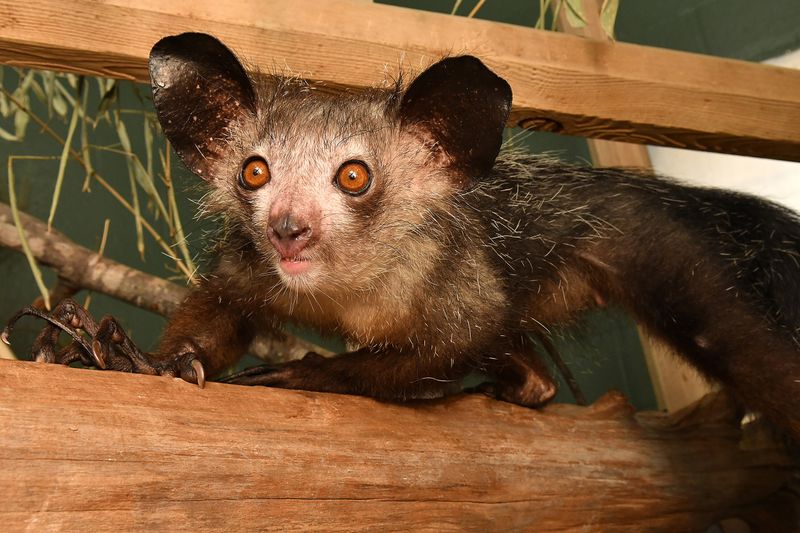
Communication among aye-ayes remains a mystery, as they possess a range of vocalizations and subtle body movements. These interactions are crucial for mating and territorial disputes.
Researchers are still uncovering the nuances of aye-aye communication, which involves a complex blend of sounds and gestures. This secretive dialogue is a fascinating area of study, offering insights into the social behaviors of one of the world’s most unusual primates.
Understanding these interactions can aid in conservation efforts, providing a deeper appreciation for the aye-aye’s social complexity. It’s a reminder of the many mysteries still hidden in the natural world.

